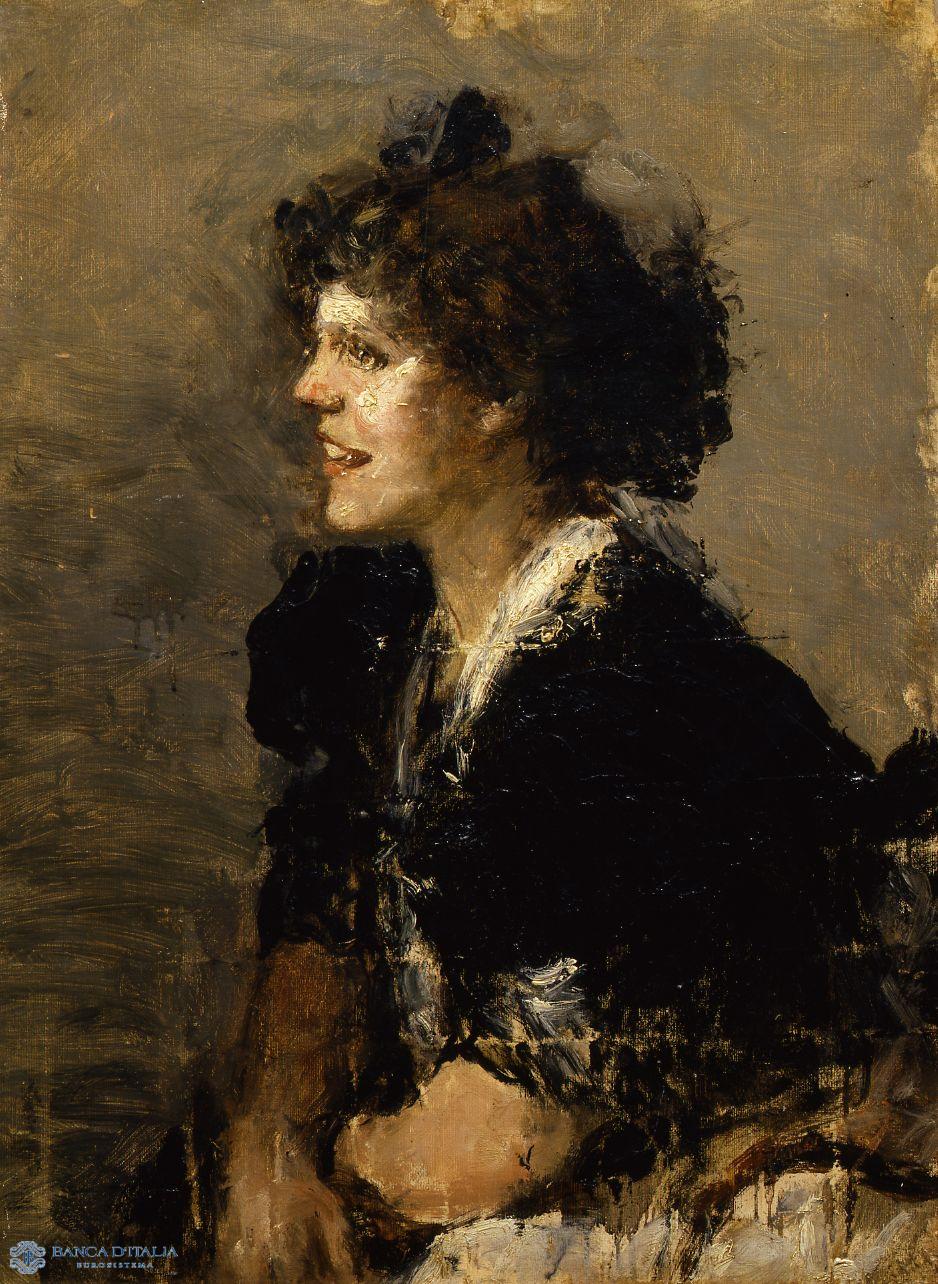Antonio Mancini was born in 1852 in Albano Laziale (in the province of Rome). From a poor background, by the age of 12 he had moved to Naples where he studied at the Academy of Fine Arts under the guidance of Domenico Morelli. He lived in extreme poverty sharing accommodation with the sculptor Gemito. He earned the admiration of his Neapolitan teachers, including Cammarano, De Nittis, Michetti and Dalbono and, on the suggestion of Morelli, he also came to the attention of Fortuny who in turn recommended him to Goupil. In 1873 Mancini left for Paris, attracted by the Parisian curator. There he met the Dutch painter Mesdag who fell in love with his work and bought most of his paintings for his collection (which then passed to the Museum of Amsterdam). He achieved genuine success, but the pressure of his commitments and his homesickness led him to a nervous breakdown which forced him to return to Naples where he stayed for four years in a clinic for health reasons, although he continued to paint. He returned briefly a second time to Paris and London in 1879. In London, he renewed his success, including contact with the great Sargent, who introduced him to the English curators and collectors, but once again, because of trouble with his nerves, he was obliged to returned to Italy. In 1883 he moved permanently to Rome.
His repertory remained tied to themes featuring common folk with the addition, nevertheless, of penetrating and lively portraiture. He enriched his way of painting with a new method of applying colour by creating crumbs of material and using extrapictorial materials such as bits of coloured glass. In this way his painting was a precursor to a concept of colour as pure material which only came into practice after the mid-1900s. He died in Rome in 1930 and was buried following an imposing funeral service in the church of St. Anselmo on the Aventine Hill.
Antonio Mancini
Antonio Mancini (Albano Laziale 1852 - Rome 1930)
20th century AD
19th century AD

Compiler
Augusta Monferini




